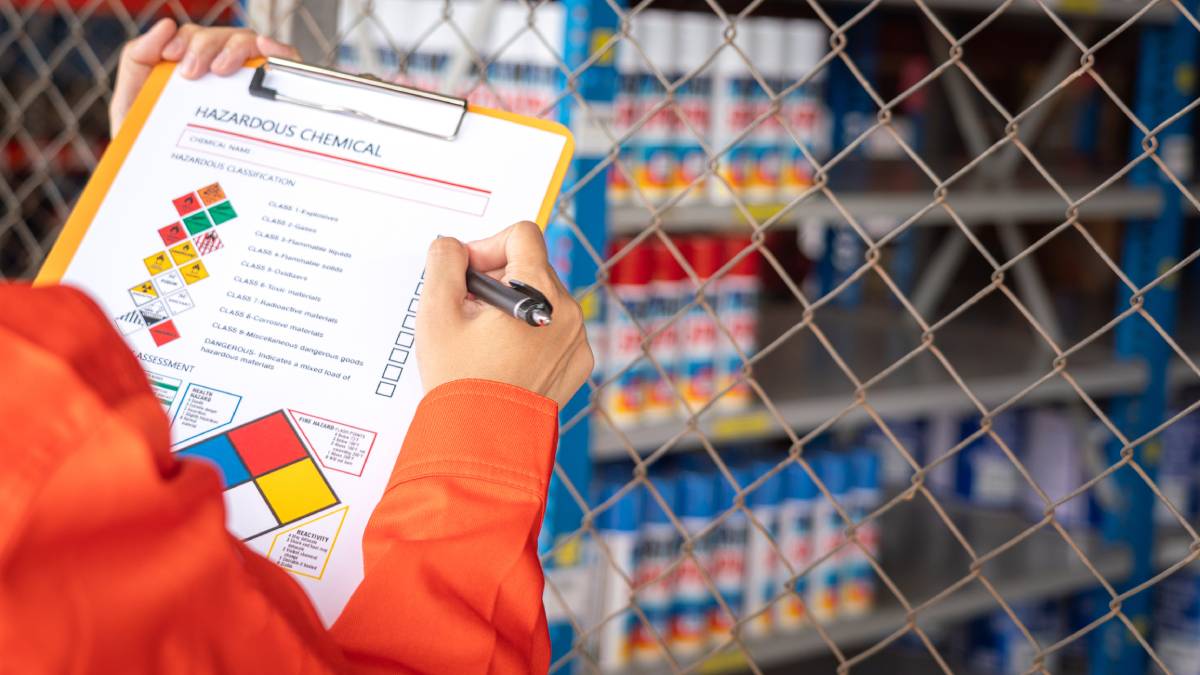Most companies generate some form of hazardous waste, but many do not have adequate procedures for managing these materials. The consequences of improper storage go beyond regulatory penalties, they also include worker injuries, environmental contamination, and long-term liability issues.
The process of hazardous material waste management begins the moment materials become unusable or unwanted. When this happens, these materials must be properly classified, labeled, and stored in accordance with federal and state regulations. An environmental consulting service can guide organizations through this complicated landscape, but understanding basic requirements helps organizations maintain compliance between professional assessments.
Hazardous Waste Classification
Before labeling or storing any materials, companies must determine whether they qualify as hazardous. The EPA defines hazardous waste through four characteristics: ignitability, corrosivity, reactivity, and toxicity. Materials displaying any of these properties require special handling procedures.
Ignitable wastes include liquids with flash points below 140°F, such as solvents, paint thinners, and specific cleaning solutions. Corrosive materials have pH levels below two or above 12.5, which are capable of destroying metal containers or damaging human tissue. Reactive wastes can generate toxic gases, react violently with water or other substances, or even explode. Toxic wastes contain harmful concentrations of specific chemicals that pose risks to human health or the environment. Particular wastes appear on EPA lists regardless of their properties. These include wastes from specific industrial processes, discarded commercial chemical products, and materials from non-specific sources. Businesses must consult both characteristic-based criteria and list-based determinations when classifying waste options.
Labeling Requirements
Proper labeling serves as the first line of defense in managing hazardous material waste. Labels communicate critical information to anyone handling containers. One of the most common violations businesses get hit for is missing or incomplete labels. Every hazardous waste container must display a label stating that it contains hazardous waste in clear, visible lettering.
- Information your label should have:
- Accumulation start date
- Identifies all contents, not just the primary materials
- Chemical composition
- Labels with either specific chemical names or EPA hazardous waste codes
- Physical and health hazards through standardized symbols or written warnings
- Generator information
- Some states require additional information
Storage Containers
The choice of storage container significantly impacts the safety of hazardous waste. Materials must remain compatible with container composition to prevent deterioration, chemical reactions, or potential leaks. Steel drums are suitable for many liquid wastes, but can corrode when storing acids. Plastic containers are suitable for certain chemicals but can degrade when exposed to solvents.
The condition of your container requires regular monitoring. Even minor deterioration can lead to releases that contaminate soil, groundwater, or indoor air. Weekly inspections can identify problems before they escalate. Closure mechanisms must function properly and remain closed except when adding or removing waste.
Storage Area Requirements
Hazardous waste storage locations requires careful planning and ongoing management. These areas must remain accessible to facility personnel while preventing unauthorized access. Using locked gates, fenced enclosures, or secured buildings prevent unauthorized individuals from accessing hazardous materials.
Physical separation between incompatible wastes prevents dangerous chemical reactions. Environmental conditions such as temperature, humidity, and rain can affect waste stability and durability of containers. To allow for safe container movement and emergency access, adequate aisle space is necessary.
Time Restraints and Accumulation
Hazardous waste requires safe removal when it reaches certain time limits and accumulation levels. Regulatory frameworks establish strict timelines for the storage of hazardous waste. These frameworks can differ based on generator status, which is contingent on monthly waste generation quantities.
Training and Documentation
Anyone handling hazardous waste must be trained on waste identification, proper handling procedures, emergency response, and regulatory requirements. Frequency of training depends on job responsibilities and regulatory classifications.
Companies are required to maintain logs that track waste generation, storage locations, accumulation start dates, and documentation of disposal. The complexity of hazardous waste management regulations requires ongoing attention and periodic assessment. Investing in proper labeling, storage, and documentation systems protects workers, communities, and the environment while maintaining regulatory compliance and avoiding costly violations.
CTA: Want to ensure you comply with labeling and storing hazardous waste? Give us a call today.
Reference:
https://www.epa.gov/hw
